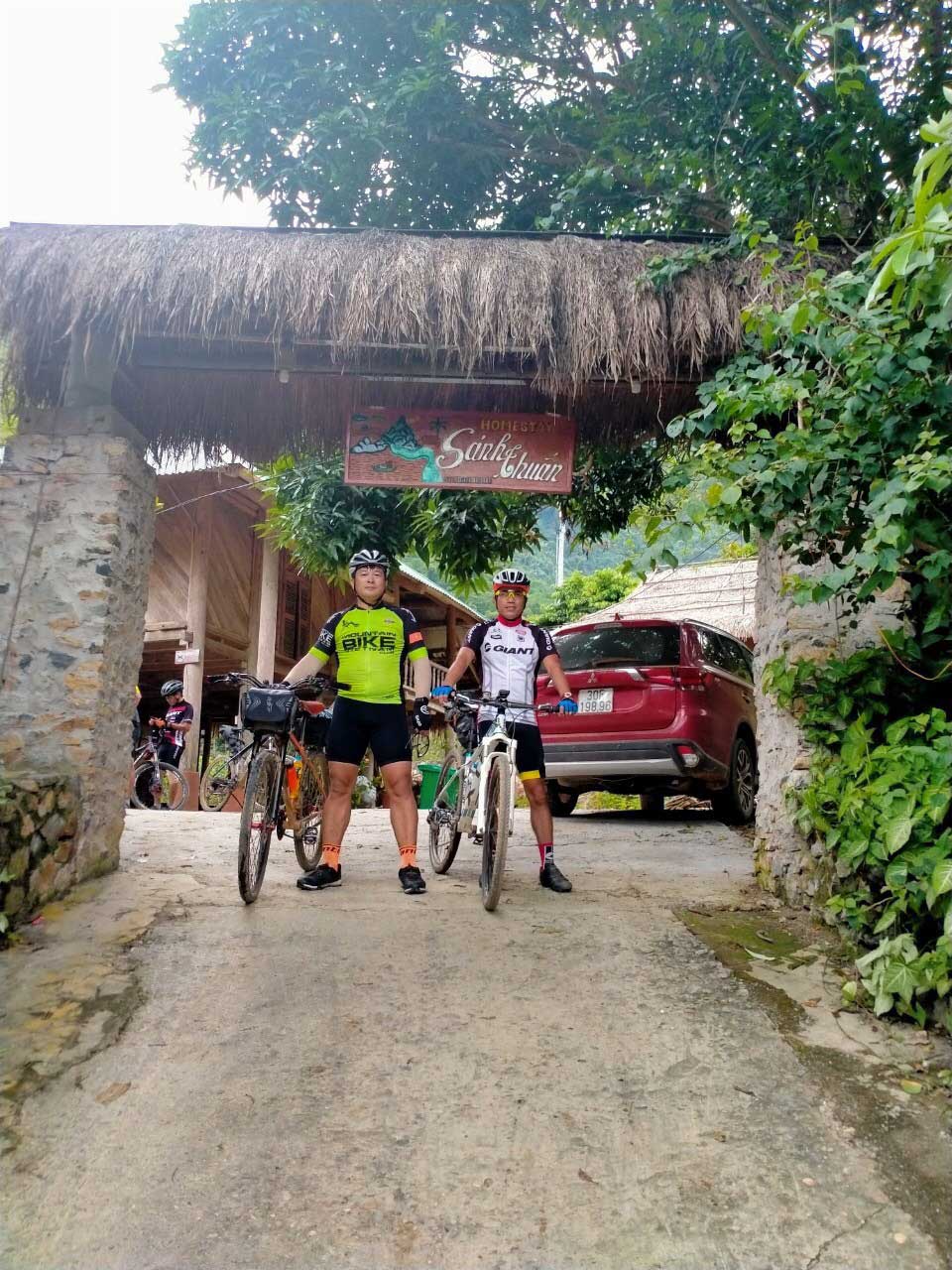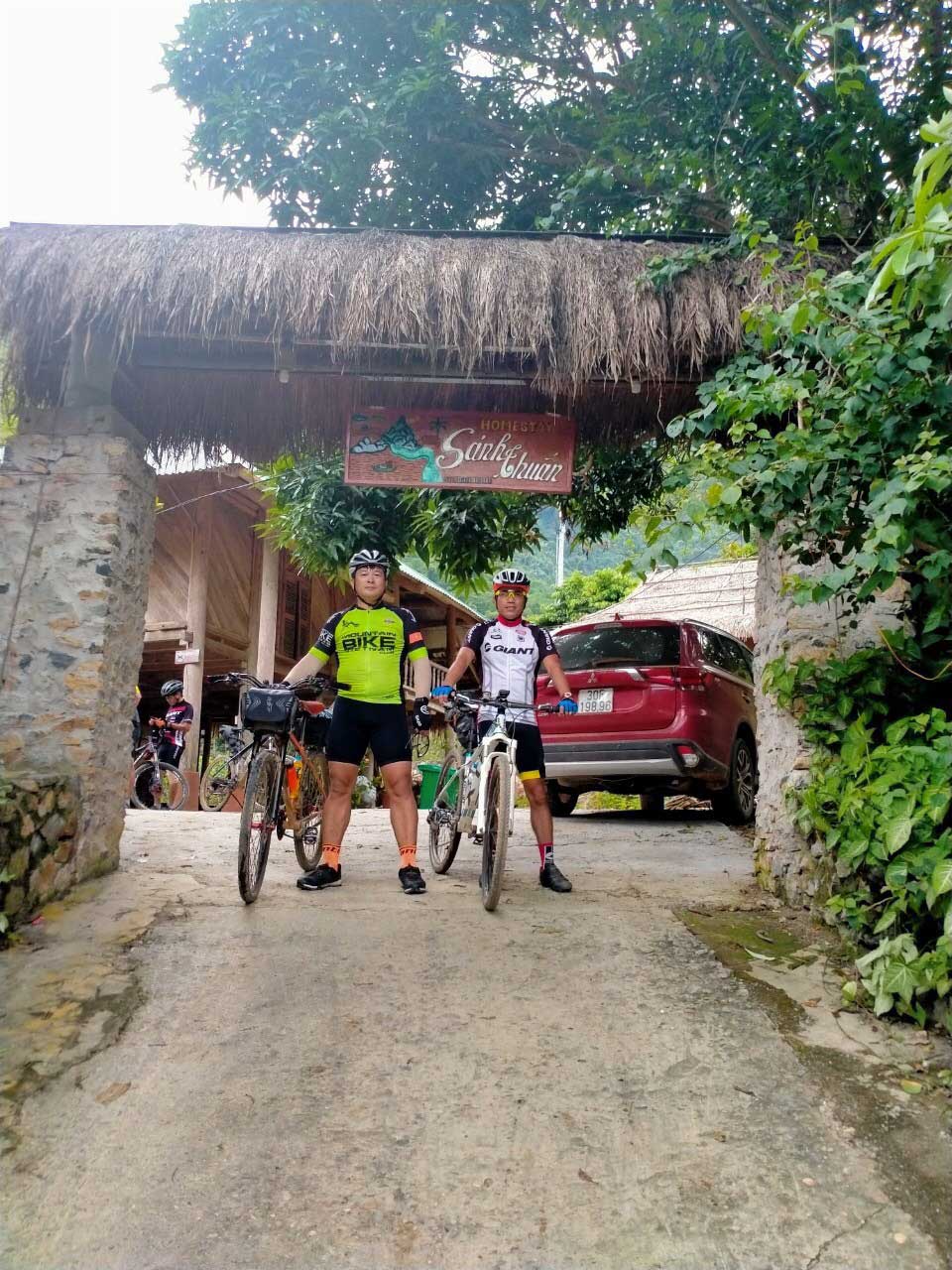



Currently, Ke hamlet in Hien Luong commune (Da Bac) has become a favorite destination for travelers who love exploring. The photo was taken at Sanh Thuan Homestay.
From Hoa Binh city, there are two ways to get to Ke halmet. One is to travel by road, following the Provincial Road 433, turning left at Da Bac town, then travelling another ten kilometers, then following the winding road along the lake to reach Ke hamlet. The second way is to move by water from Thung Nai port. After 1 hour floating on the lake, watching the "floating islands’ overhang, you will arrive I Ke halmet. There is its own interest on both ways, however, many tourists choose to travel by water. There is a distance to enter Hie Hien Luong "Bay”, you can see the women of Ke village waiting on the bank, beating gongs to welcome guests. Walking for about a few hundred meters, you will arrive at the center of Ke village. The village has an area of about 700 hectares, which is located in Hien Luong commune, it is right close to Hoa Binh lake. Behind is the high horned limestone mountain range, shielding Hien Luong Bay, creating a peaceful Ke village all year round.
The people of Ke village start welcoming Tet from Lunar December 28th. Most of the shopping work is done by the women. And the men are in charge of of repairing, cleaning the houses, to welcome Tet. Right on New Year's Eve, every family burns incense, opens the door so that "the fortune” can come into the houses and to welcome guests to "be the first people visiting their home during Tet”. On the ancestor's altar during Tet days, the people of Ke village always show Ong cakes made from rice, boiled castrated chickens, pork, five-fruit tray ... Currently, there have been many changes, but the Lunar New Year for Muong ethnic people in Ke village is always the first day of the new year, and it is an opportunity for everyone to eliminate all worries, have fun, enjoy happiness.
With many years working in community tourism, however, welcoming guests on Tet holiday still makes Mr. Dinh Quy Huu, the owner of Huu Thao homestay, is still confused. Handing the clean towels to guests, inviting them to drink fragrant herbal water, Mr. Quy smiled as friendly as welcoming relatives back. After a few minutes of rest, the visitor's journey to discover Ke really begins, in the simple introduction of the owner: "There are over 90 households in Ke village, 100% of whom are Muong people with the cultural features from the living to eating style which is almost original. The charming natural landscape and the stream in the middle of the village flow all year round, the traditional houses on stilts of Muong people surrounded by green space help visitors choose many beautiful frames to pose and share on social networks for relatives and friends to admire”.
Currently there are only 3 households doing the community tourism in Ke village. Visitors coming to Ke village are mainly French, Swedish, Japanese, Korean, and the groups of students in the country. Tourists are very interested in learning about the customs, habits and activities of the local people. Tourists coming to the village this Tet, in addition to enjoying the traditional dishes such as chicken raising on the hill, fish raising on the lake, sour bamboo shoots, Can wine and Hoang wine, they can also participate in cultivating, breeding, cooking Lam rice, fishing, Sap dancing, Xoe dancing. They can also experience cycling around the village, swimming, rafting, bathing on the streams...
Although a professional tour has not yet been formed, initially the households in Ke hamlet have linked, creating their very own "tourist route”. From Ke hamlet, tourists can visit on foot on a journey to Ngu and Mai villages in Hien Luong commune, crossing the dreamy Bieu mountain to Sung hamlet in Cao Son commune, the place where 100% of Dao ethnic people live.
Leaving Hien Luong "bay”, during the night of campfire, harmonizing Sap dancing with the local people, then visitors fall asleep under the roof of the stilt houses in the fresh and peaceful air. We all believe that Ke hamlet will hold many tourists coming back to visit, and along with the investment from the local Party committee and the appropriate authorities, tourism in Ké hamlet will definitely take off.